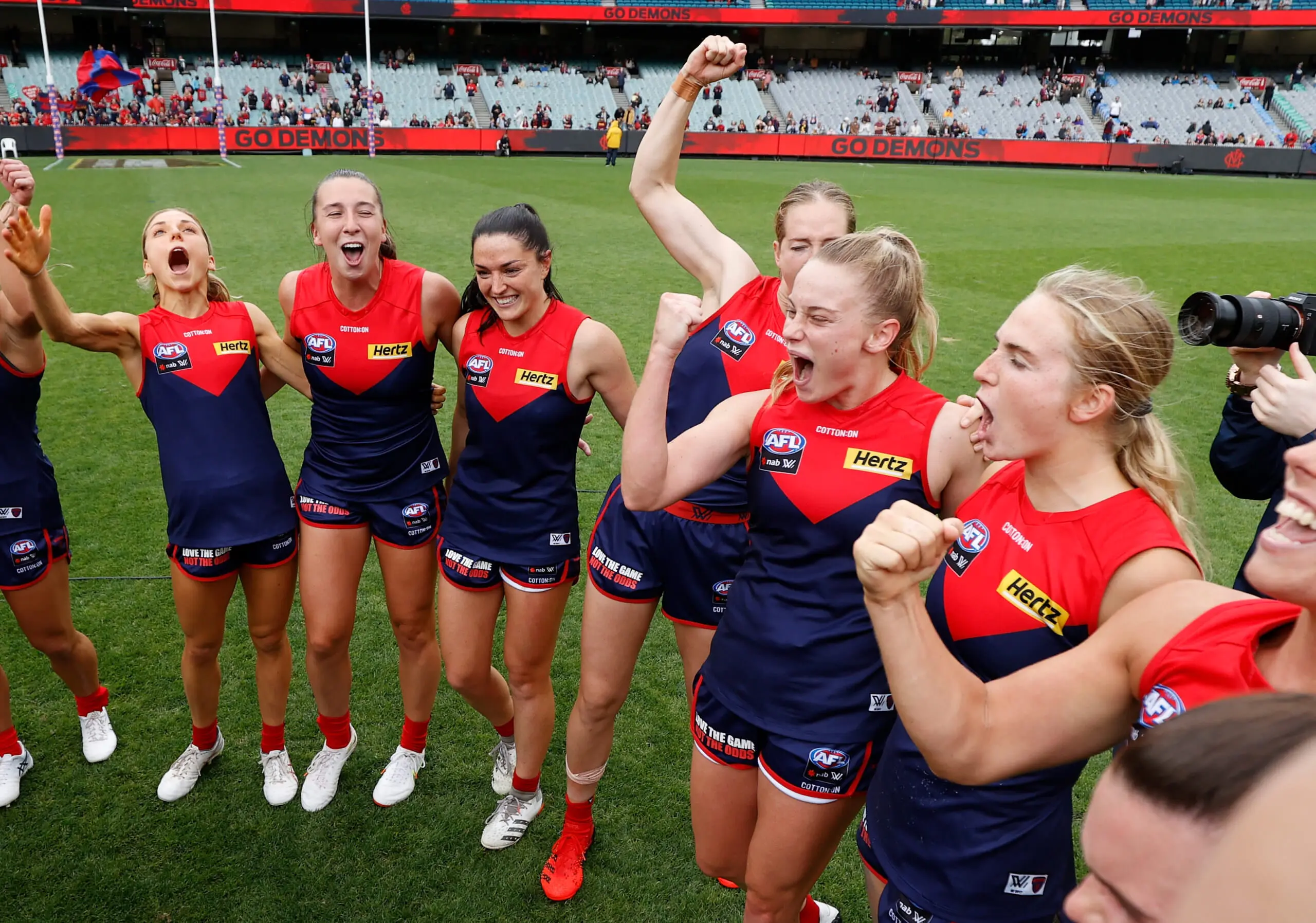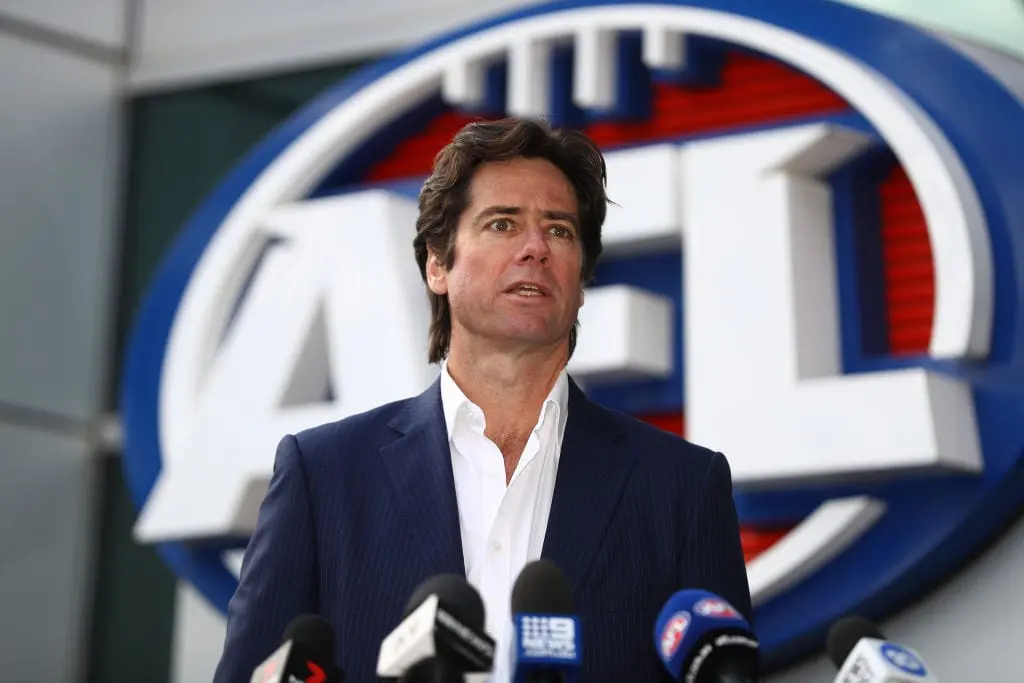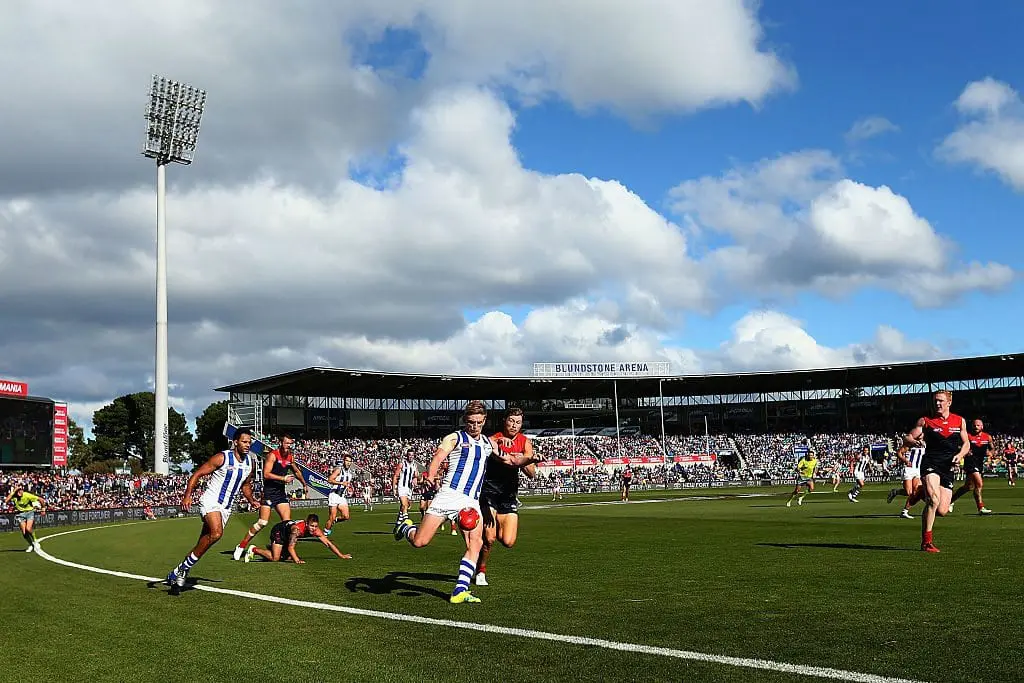The AFL's new $4.5 billion broadcast deal has created a new paradigm in sport as the league becomes the most lucrative product in Australian sports broadcasting history.
Football will continue to be screened on Channel 7 and Foxtel/Kayo after they fended off several competitors including Paramount Global (Ten Network and Paramount +) and Channel Nine/Stan to bid up the eventual price to $643 million per season, up on the current $473 million per season.
The league's huge $4.5 billion financial windfall is set to benefit current players and coaches, as well as grow the game and the development of community football.
Maybe the @AFL could spend some of that $4.5 Billion on better cameras for the goal review system?
— Higgo (@Higgo74) September 6, 2022
The AFL Players Association is seeking to establish a joint AFL/AFLW collective bargaining agreement (CBA) in an imminent deal that should yield a financial gain for players.
The agreements will also leverage the existing media deal that will bring in $946 million in 2023-2024.
The current AFL and AFLW CBAs are set to expire at the end of this season, with players currently having access to 28 per cent of forecast defined AFL revenue.
The list of million-dollar per season AFL players will increase, with more players set to join superstars such as Dustin Martin, Nat Fyfe, Jeremy McGovern and Lance Franklin as figureheads for the AFL's product.

Former senior coach Ross Lyon said AFL players deserve higher compensation in line with the international sporting experience.
"I think it should go to the player group," he told Footy Classified.
"They're putting on the show. I think the percentage by world standards is slower.
"Inflation hasn't moved in the salaries like it should. Our top players... the players deserve a bigger slice or a fair slice."
The average men's salary for this season is approximately $390,000, but that could jump to around $500,000 under the new deal.
Importantly, AFLW players should continue to receive another boost on the 94 per cent increase in income in the season seven deal.
The new broadcast deal will provide enough funds to fully professionalise the AFLW by 2026 and materialise a reality where women do not need to choose between playing football or an alternate career.

The average AFLW season salary is currently $46,280.
The AFL also announced it would raise the soft cap in clubs' football departments.
At an announcement on Tuesday, outgoing AFL CEO Gillon McLachlan said the new broadcast rights would allow for a huge financial injection into community football development.
"This partnership will provide unprecedented levels of financial support to invest more in ensuring every person who wants to play footy will be able to play footy," he said.
"It will allow us to invest heavily in expanding our reach into the local community and also to invest in the next generation through more digital products that are targeted at attracting kids and providing a pathway to engaging physically with our game."
Last week, the commission enshrined a decision to invest 10 per cent of AFL turnover into community and grassroots football - facilities, programs and state leagues - immediately injecting $17 million into that space next year.
The growth in women's football across the country has highlighted the need to upgrade dressing rooms and overall ground facilities, with McLachlan claiming the league needs to "build an oval a week for the next five years to keep up".
Further investment into the league's umpiring would be suited given the shortfall of community officiators across the country.
The new media deal will also act as financial proof for the introduction of a Tasmanian AFL team, with the 18 existing club presidents set to imminently vote on the feasibility of a 19th AFL licence.
Veteran sports broadcaster Gerard Whateley said it could produce a reality where a Tasmanian AFL team enters the competition in 2026.
"Fundamentally, the game can afford its 19th licence.There will be no denying Gill when he brings it to the table," he said on SEN.
McLachlan had previously indicated that Tasmania's bid for a league team would hinge on the construction of a new stadium.
The Tasmanian government estimated the cost of a new stadium at about $750 million, with the new broadcast deal potentially enabling to AFL to chip in, or at least provide the security of around $15-20 million in annual distributions for the new club.
The league's huge financial gain of$4.5 billion over seven years would seemingly be directed at promoting and developing the game. The AFL doesn't pay corporate tax as a 'not-for-profit' organisation, under an 86-year-old exemption clause; "(the organsiation) is established for the purpose of encouragement of a game or sport".



























“It will allow us to invest heavily in expanding our reach into the local community and also to invest in the next generation through more digital products that are targeted at attracting kids and providing a pathway to engaging physically with our game.”
“local community” translates into the money pits of Gold Coast and Western Sydney – and country Victoria. All else will get “jack”….
“Digital products” translates into a paywall (streaming subscriptions).
There will be a “greater number of “free-to-air” games on 7, in Victoria (where members can go see “away games” anyway – but there will no doubt be less in WA and SA (where members cannot)……. Basically the vfl (afl in name only) has screwed the members of Adelaide, port, Fremantle and West Coast….. obviously breaking a “deal” made previously…… (no surprise).
aS for the player’s salaries – good that they get more (administrators should get less) particularly the girls… however just as there is a salary cap per club, there should be a salary cap per player (the situation where one player can receive as much as several others – regardless of talent – is simply “wrong’. This “cap” should be set to a certain % of the club’s salary cap.